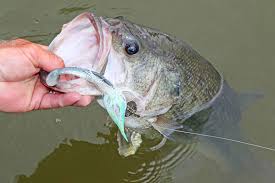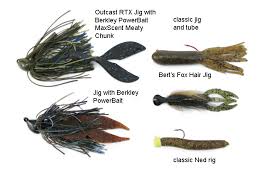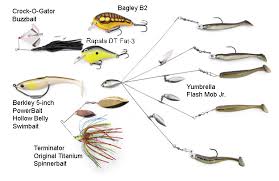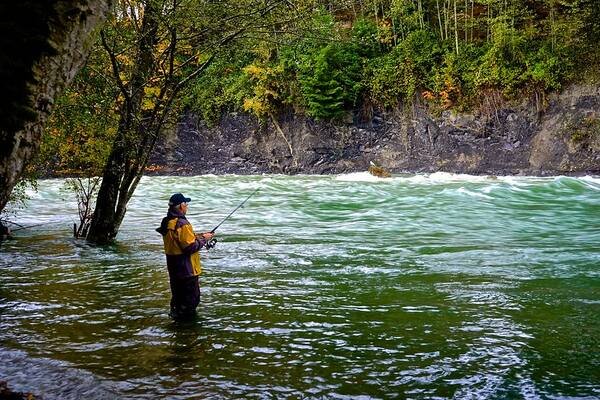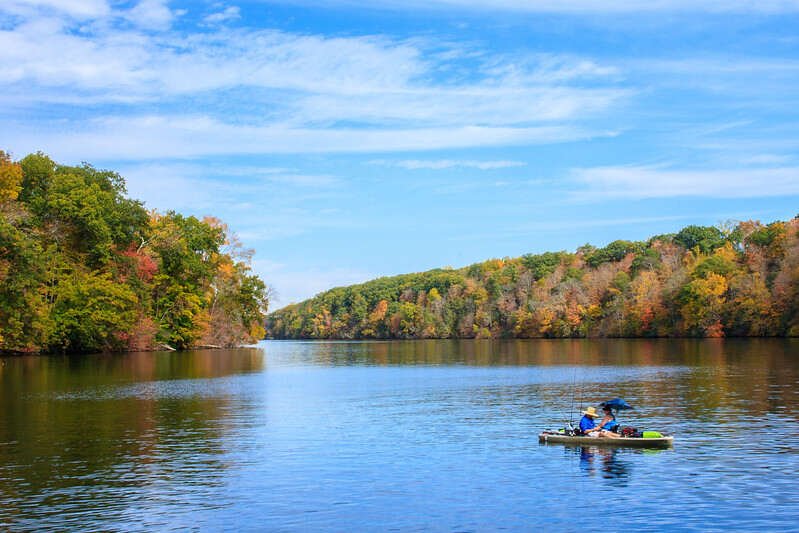Fall is one of my favorite times of the year to fish. The air has that crisp freshness, the leaves are turning brilliant shades of red and gold, and the water starts to cool down just enough to trigger some incredible bass activity. Over the years, I’ve discovered that bass fishing in the fall can be both exciting and rewarding — if you know how to approach it.
Today, I want to share some of my personal bass fishing tips in the fall that have helped me consistently put more bass in the boat during this season.
Understanding Bass Behavior in the Fall
One of the first things I learned over my years on the water is that bass don’t behave the same way in the fall as they do in summer or spring. During the hot summer months, bass tend to stay in deep, stable areas where the temperature is comfortable. But as the water cools in the fall, they start moving.
By September, I’ve noticed bass begin to emerge from those deep summer hideouts and venture into mid-depth flats, creek channels, and even shallow pockets. They’re on the hunt for food, preparing for the cold winter months ahead. That’s why fall is such a great time to target them — they’re hungry, aggressive, and often concentrated around areas where baitfish are plentiful.
One thing I always remind myself is to think like a bass. If you can understand where they’re likely to be and why, your chances of success multiply. That’s where the first key to my fall fishing approach comes in: finding the transition areas.
Find the Transition Zones
Transition areas are the sweet spots where bass move between deep summer habitats and shallower feeding grounds. Think of ledges, humps, ditches, submerged timber, creek mouths, or any structure that gives bass an advantage over their prey. In my experience, these areas are gold mines in the fall.
When I’m scouting a new lake, I start with these transition zones. Even if I know a lake well from the spring or summer, fall changes everything. Water temperatures drop, daylight shortens, and bass start shifting their positions daily. Spending time identifying these transition spots gives you a huge advantage.
Another tip I swear by is using natural signs to locate bass. Diving birds, surface wakes, and baitfish movements are like signals the bass are feeding nearby. I always watch for these subtle hints — sometimes they lead me to schools of bass I wouldn’t have found otherwise.
Focus on the Bait
Bass don’t just move around randomly in the fall. They follow the bait. And by late summer and early fall, baitfish like shad, bluegill, and shiners have grown to a perfect size — usually 2 to 4 inches — and bass are hungry for them.
When I find areas with active bait, I target them aggressively. I’ve learned to cover water quickly with baits that mimic these natural prey. Sometimes it’s a topwater lure that excites bass into striking, and other times it’s a swimbait that imitates a fleeing shad. The key is to match the hatch — giving bass exactly what they’re hunting.
Best Baits and Lures for Fall Bass
Over the years, I’ve built a small arsenal of lures I rely on every fall. Here are a few that never fail me:
- Texas-Rigged Worms: This is my go-to, no-matter-what lure. Whether the bass are in a pond, river, or lake, a green pumpkin or black-and-blue worm fished slowly along the bottom can trigger bites when nothing else works.
- Swimbaits: Big swimbaits mimic those healthy fall shad, and while you may not get as many bites, the ones you do catch are often trophy-sized bass.
- Crankbaits: These help cover water efficiently and target bass at specific depths. I usually start deep and work my way shallow, adjusting the speed and style until I find where the bass are active.
- Senko Worms: These versatile soft plastics are excellent in both shallow and mid-depth water. A simple twitch-and-pause retrieve often drives bass wild.
- Buzzbaits and Chatterbaits: Especially useful in shallow flats or around structure, these lures create a lot of action and can provoke aggressive strikes from otherwise reluctant bass.
I always keep a few different options handy, because not every day on the water is the same. If one lure isn’t producing, I switch quickly. In fall, bass are often aggressive, but they can be picky depending on water clarity, temperature, and bait presence.
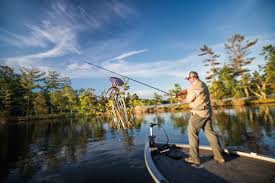 Target the Right Locations
Target the Right Locations
Besides transition areas, certain spots consistently hold bass in the fall. Here’s where I focus most of my efforts:
- Shallow Flats: Pre-spawn areas are excellent during early fall. Bass will push shallow to chase bait. I systematically work these flats, starting deeper and moving shallow until I locate the active fish.
- Creek Mouths: These are natural choke points where baitfish move from deeper water to shallower creeks. Bass set up here to ambush. Keep an eye on shifting weather, because bass may move in and out quickly.
- Flowing Water and Current: Bridges, spillways, or small river currents can concentrate bait and trigger bass strikes. Observing how water flows around structures often points to where bass will position themselves.
- Structures: Docks, boat houses, fallen trees, or submerged timber offer cover and attract both bass and baitfish. I often check these spots with a topwater lure first to see if bass are active.
Weather and Timing Matter
One of the biggest lessons I’ve learned is that weather plays a huge role in fall bass fishing. Cold fronts, windy days, or rainy conditions can all be positive if you know how to use them.
For example, I’ve found that bass often become more active following a cold front. The bait moves, water conditions change, and the bass go on feeding frenzies. Wind can push bait into pockets and creeks, creating natural ambush spots for bass. I never shy away from fishing in “bad weather” days — those are often the most productive times.
Ponds vs. Rivers vs. Lakes
Fall bass fishing can differ depending on the type of water:
- Ponds: These cool down first, so bass often feed aggressively here before larger bodies of water. Focus on shallow flats and areas where the bait starts congregating.
- Rivers: Crawfish and shad are plentiful, and current provides natural ambush points. Spinnerbaits, crankbaits, and buzzbaits work very well in flowing water.
- Lakes: Larger lakes require more scouting. Use electronics if possible to find bait schools and identify transition zones. Cover structures like points, humps, and submerged timber for best results.
Experiment and Adjust
Fall bass fishing isn’t an exact science. Even with all the right tactics, the bass can behave unpredictably. Over the years, I’ve learned that experimentation is key. If one lure, depth, or location isn’t working, switch it up. Try different retrieve speeds, colors, and presentation styles. Watch for subtle signs — a twitch, a swirl, or a jumping baitfish can tell you exactly what the bass want.
Closing Thoughts
There’s something magical about fall bass fishing. The weather, the water, the changing leaves, and the thrill of chasing aggressive bass create a unique experience that few seasons can match. By focusing on transition zones, following the bait, selecting the right lures, and paying attention to weather and structure, you can dramatically improve your fall bass fishing success.
Remember, fishing is as much about patience and observation as it is about skill. Take your time, enjoy the season, and let the fall work for you. With these bass fishing tips in the fall, I’m confident you’ll have some of your best days on the water yet.
Tight lines and good luck out there!
